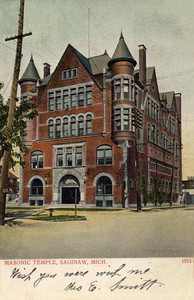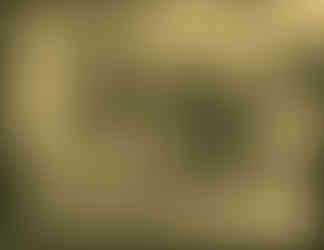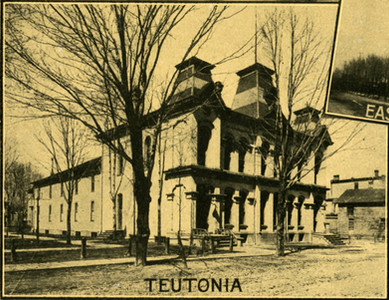While our exhibit Stories of Saginaw’s Silver Screens: Saginaw County Movie Theaters, is currently available, it will need to close on January 17th to accommodate the new traveling exhibit from the Smithsonian, ¡Pleibol! In the Barrios and the Big Leagues / En los Barrios y las Grandes Ligas. Although it will be reinstalled in the spring, we wanted to share with you some of the stories that we discovered while researching and creating this exhibit.
By the time the first motion pictures were shown in Saginaw in 1897, Saginaw was Michigan’s third-largest city. Since before the civil war, opera houses, lecture halls, and theaters provided venues for live entertainment. Saginaw’s stages served city residents and people living in the outlying communities. On December 16, 1884, the Academy of Music was opened on South Washington Avenue and Janes Street (then named William Street) and was considered one of the finest theaters in the state.
As the cities of East Saginaw and Saginaw City thrived and were consolidated to become Saginaw, by the late nineteenth century its theaters and lecture halls were important stops for traveling companies. However, popular entertainment was soon to be transformed by a new invention, the motion picture.
The perfection of the motion picture was the result of the work of several inventors. One of the great breakthroughs was made in France by brothers Auguste and Louis Lumière. They were pioneers in the development of a process of projecting moving images and demonstrated their system - known as the cinématographe - in February 1895. In January of 1897 - two years after the system was first shown to the public in France - presentations showcased this system in Saginaw at the Masonic Temple and the Teutonia. ________
Three years later this early motion picture system – now advertised as a biographoscope - was a regular fixture at Saginaw’s Riverside Park. These early motion pictures were extremely short – often less than a minute long and without plot. Simply preserving people’s motions seemed magical. Although most of the early titles are unknown, we do know that in August 1900 a film of a bullfight was featured at Riverside Park and a copy of the Lumières’ 1900 motion picture documenting a Spanish bullfight survives. Although we have no way of verifying that this is the exact film shown on August 4, 1900, if it isn’t, it is almost certainly very similar to what captivated audiences at Riverside Park in the summer of 1900. This link will take you to another website with a copy of the Lumières bullfight film: https://www.youtube.com/watch?v=ZV9hpcnHv7E
A year later, the park was advertising films of local scenes – including a trip on the Interurban between Saginaw and Bay City. (No prints of these are known to have survived.)




